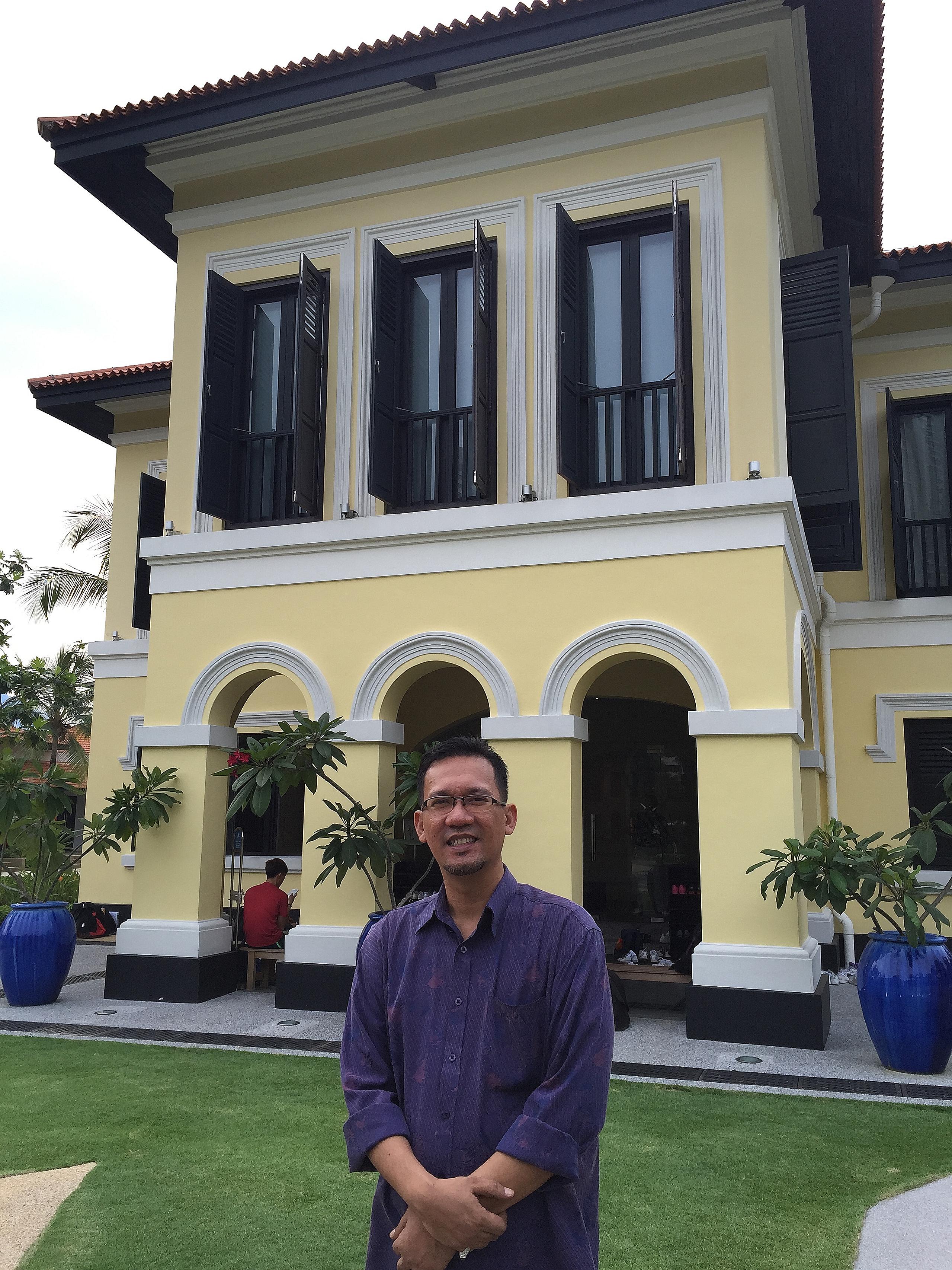Growing up in a historic monument
Sultan's descendant wants more recognition for Istana Kampong Gelam in S'pore heritage
Sign up now: Get ST's newsletters delivered to your inbox

Mr Tengku Shawal, 47, used to slide down the banisters of this former palace, which became the Malay Heritage Centre in 2005.
ST PHOTO: MELODY ZACCHEUS
Melody Zaccheus
Follow topic:
The Istana Kampong Gelam might be Singapore's newly-minted 70th national monument but for Mr Tengku Shawal, the seventh-generation descendant of Sultan Hussein Shah, it was where he grew up.
Speaking to The Sunday Times after the former palace's early-August gazette, the 47-year-old logistics supervisor said he has fond memories of the 1843 structure - now the Malay Heritage Centre.
As a child he would slide down the banisters to wait for the roti (bread) man each morning.
"I was awake even before he came by, when the household was fast asleep. I also remember playing with coins at the front porch as a young boy," he said.
The 22.7ha compound was allotted to Sultan Hussein, the 19th-century ruler of Johor, after he signed a treaty with Sir Stamford Raffles to set up a trading port here.
In 1999, the Government announced that Istana Kampong Gelam would be conserved.
Mr Tengku Shawal, who now lives in MacPherson, was one of 79 beneficiaries and tenants who were awarded a total of $350,000 a year for 30 years. The building was restored after its residents moved out and turned into the Malay Heritage Centre in 2005.
The National Heritage Board centre which houses six permanent galleries has hosted one million visitors since then.
Mr Tengku Shawal hopes to eventually get his family more involved with the Malay Heritage Centre's activities, in a bid to raise awareness about the existence of the sultan's descendants here.
"I believe greater recognition can be given to the role the palace and its people played in the early history of Singapore, along with the Istana Kampong Gelam's new national monument status," he said.
Mr Tengku Shawal, a "cultural activist", said the elders in his family had given him consent to hold a ceremony where he will be officially given the title of ketua waris, or the head of the family.
Speaking on the significance of the area, heritage conservation expert Johannes Widodo, an associate professor from the National University of Singapore, said the compound was laid out based on Hindu and Buddhist mandala symbol principles.
The Sultan Mosque and royal graveyard in Jalan Kubor acted as its crown, the palace was its body, while a market town and old settlement were its feet. The palace, then a timber hut, was the seat of Malay royalty in Singapore. Over time, the hut on stilts has evolved into the British-built two-storey Istana Kampong Gelam.
Prof Widodo describes the colonial bungalow today as "a hybrid of a Bengali vernacular house, traditional Malay stilt house and European mansion typology".
Civil architect George Coleman, responsible for other historic structures such as St Andrew's Cathedral, is believed to have rebuilt the Istana Kampong Gelam.
The area was eventually cut up by the British, with Victoria Street and North and South Bridge roads cutting through the area, to diminish the power of the royals.

